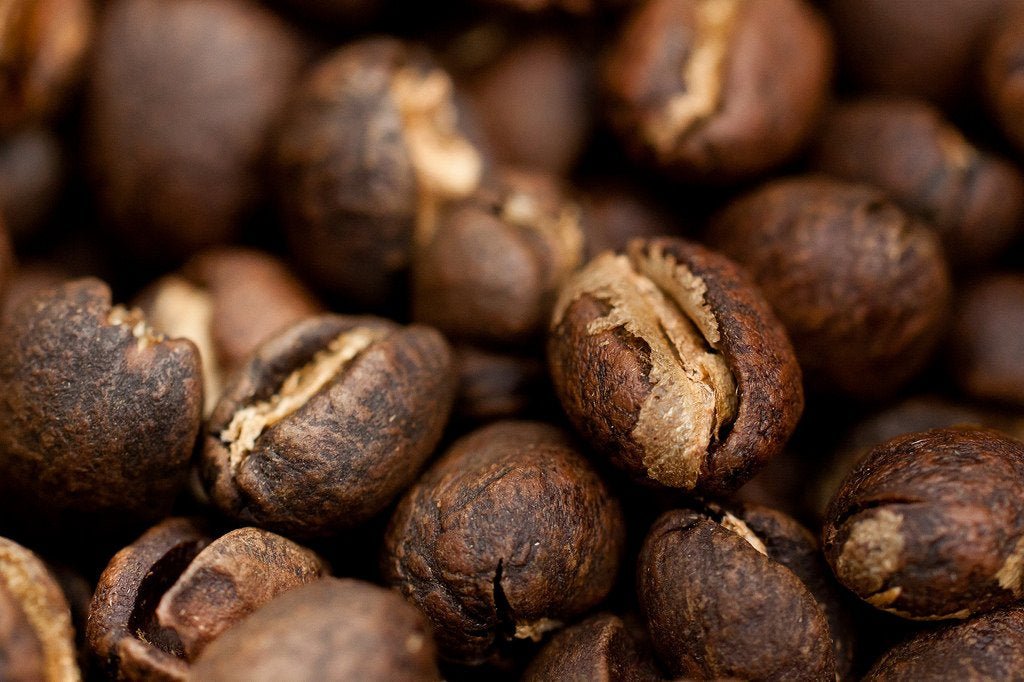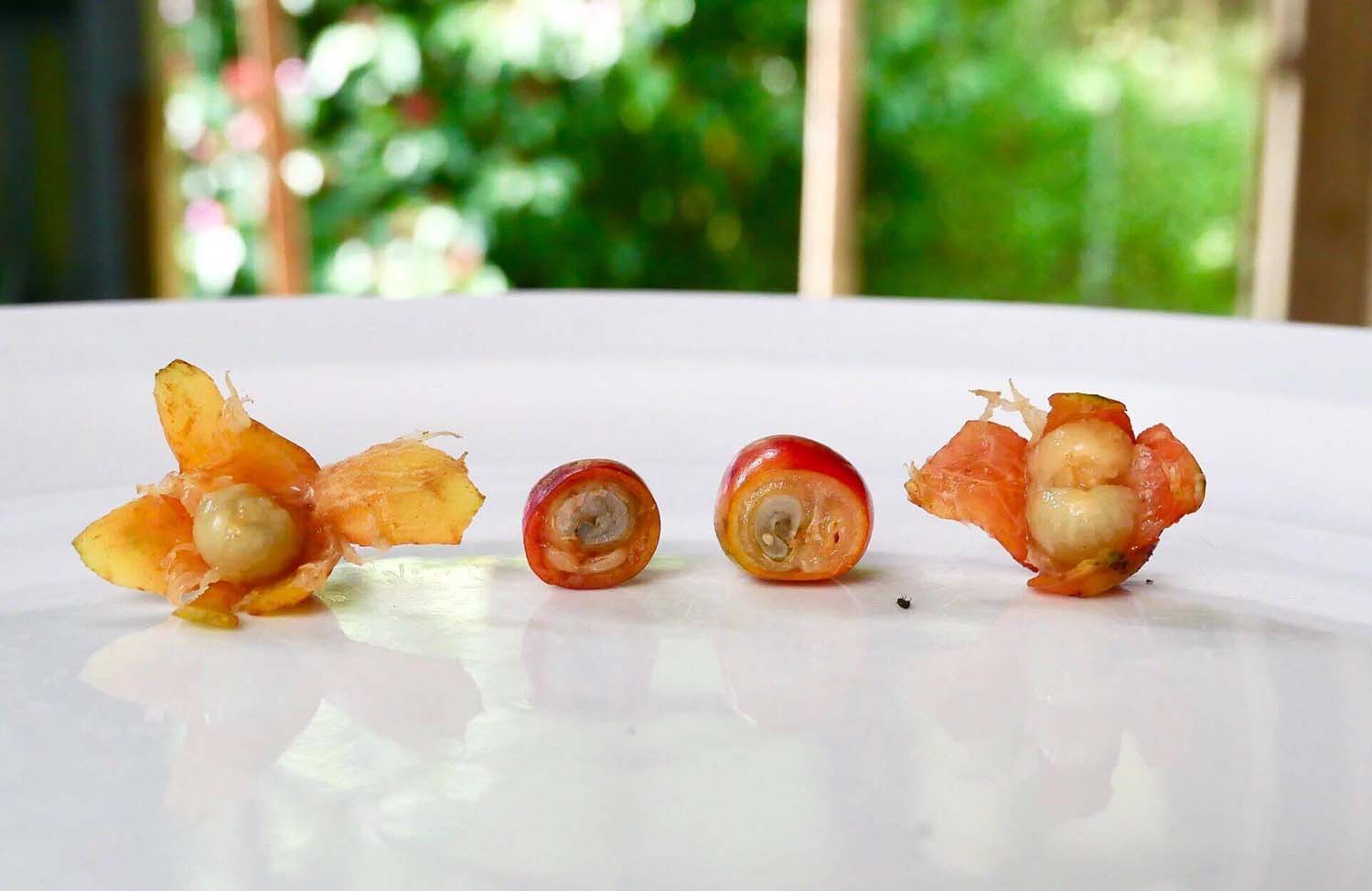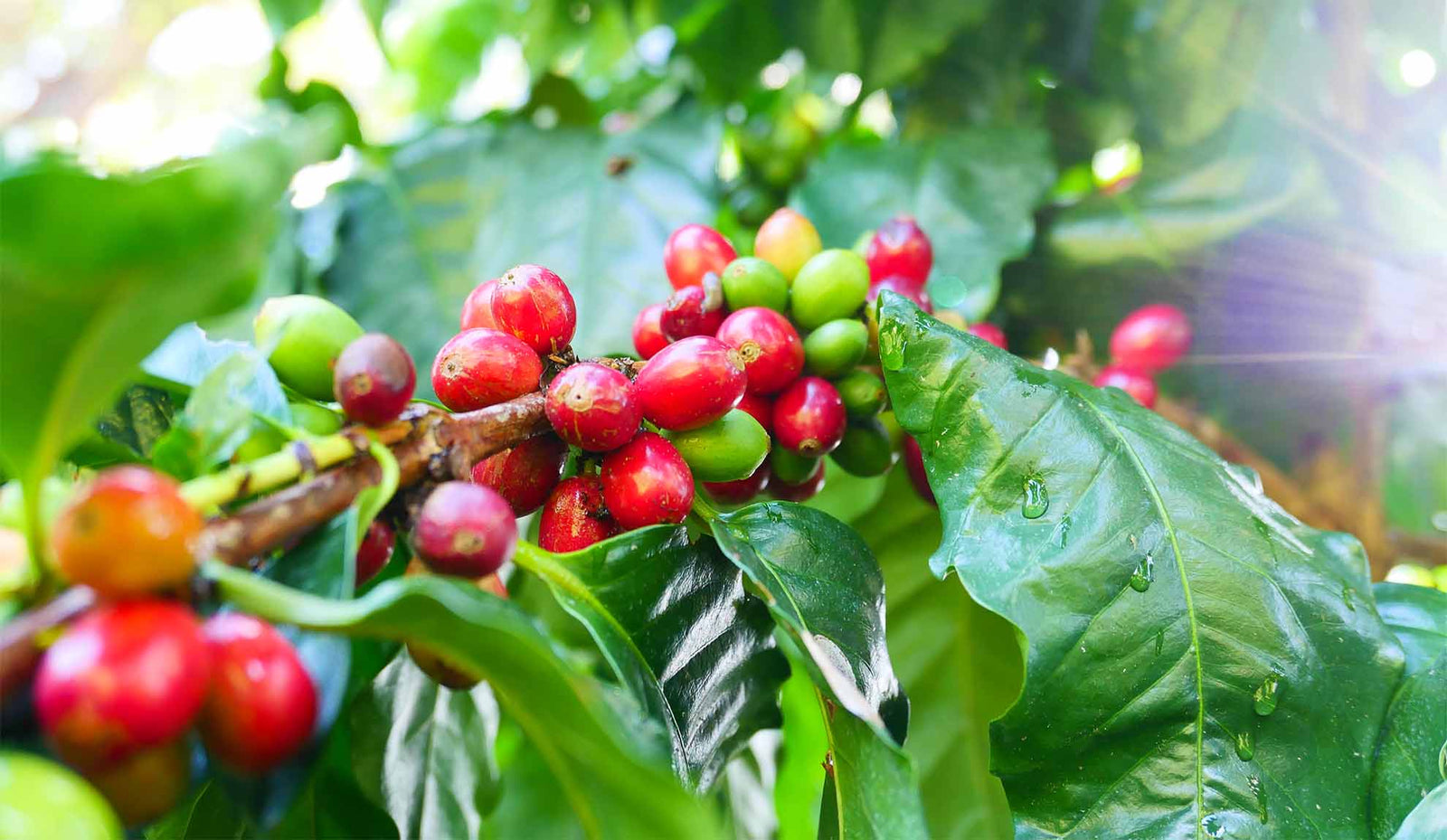If you're a coffee aficionado, you've likely seen “peaberry” coffee around. Contrary to popular belief, peaberry is not a coffee variety. Peaberry is a description of the coffee bean itself, and peaberries spontaneously appear on all coffee trees and varieties. To truly understand the peaberry, we need to look at the anatomy of coffee.
An introduction to the peaberry
Coffee is a fruit, and as such, it has seeds. The coffee beans we have come to know and love are the seeds of coffee cherries. Normally, these cherries develop two seeds, but for unknown reasons, some cherries only develop one. These only children are known as peaberries, named for their round resemblance of the pea. The industry has yet to figure out why this genetic variation occurs - perhaps due to weather, pollination, or plant nutrition. As of this moment, no one can replicate it. Less than 10% of coffees are peaberries.

Normal coffee cherries develop two seeds (right). Peaberry cherries only develop one (left).
There's currently no easy way to identify peaberry cherries from normal cherries. Peaberries are found after processing and sorting. Imagine the effort required to sort 1000 lb of green coffee to collect just 50 lb of peaberries to offer separately. This additional labor, processing, and scarcity allow producers to fetch a premium price for their peaberries.
Peaberry coffee is often tied to specific regions like Tanzania and Kenya, but it can develop anywhere in the world from any variety of coffee. In Hawaii, Kona peaberry is the most well-known partly because Kona produces almost half of Hawaii's coffee. As a result, Kona also produces most of Hawaii Island's peaberries.

Is peaberry coffee superior or is it marketing?
People will inevitably question peaberry coffee when it's fetching $10 to $15 more per pound than its flat-bean friends. There's a mix of opinions out there. Some pundits claim peaberries taste sweeter, lighter, and more flavorful. Some cannot taste a significant difference. I posed this question to Kelleigh.
"All things being equal, where the coffee was grown well, in good environmental conditions, I have always preferred the peaberry in blind tastings. Peaberries seem to have a deeper pocket of sweetness, a more balanced structure, and a brighter acidity."
There are theories this flavor amplification is due to the cherry devoting all its energy towards its only child. Perhaps it's the change in bean density, pore structure, or heat transfer within the roasting process? In roasting, peaberries have different requirements than regular beans of the same batch. Their shape requires different temperatures to ensure heat transfers into their center.

Ka'u coffee, a "cult-favorite" Hawaiian coffee with an aficionado following of its own, has just a fifth of Kona's growing area and tastes remarkably different from Kona coffee. Because of its limited availability and distinct tasting notes, Ka'u Peaberry is exceedingly unique and rare.
When we purchase Ka'u coffees from farmers, the peaberries are not pre-sorted. We mill, grade, and optical sort the coffee in-house just to collect a batch of peaberries. For our limited release of Ka'u Peaberry, exclusively for club members, we milled nearly 5000 lb of Ka'u coffee parchment to collect enough Ka'u Peaberry coffee for you. We are so excited to share this special coffee with you!




